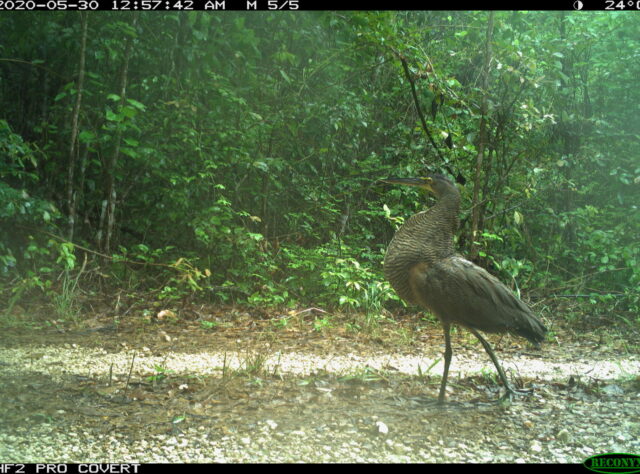
Camera trap image of a Bare-throated Tiger Heron in Belize. Image credit: Programme for Belize.
Biodiversity continues to flourish in the Rio Bravo Conservation Management Area in Belize, as three new camera traps captured a variety of exciting species this summer.
The cameras were set up in May by Programme for Belize and have already snapped Bare-throated Tiger Heron, Ocellated Turkey (Meleagris ocellata), Agouti (Dasyprocta punctata) and Ocelot (Leopardus pardalis). Camera traps are a fantastic gateway to observe wildlife with minimal interference and it is always exciting to receive updates from our partners across the world.
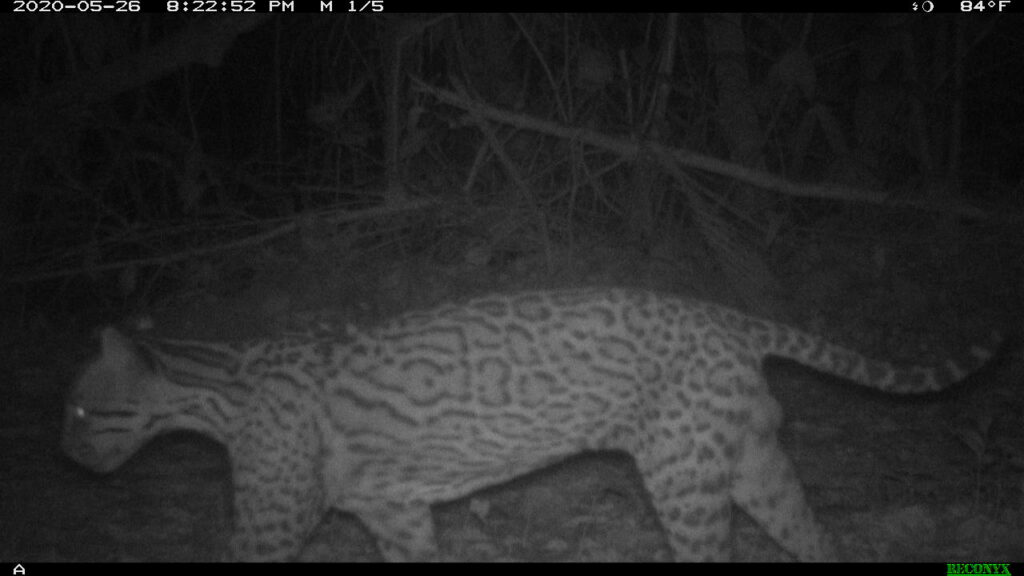
Camera trap image of an Ocelot in Belize. Image credit: Programme for Belize.
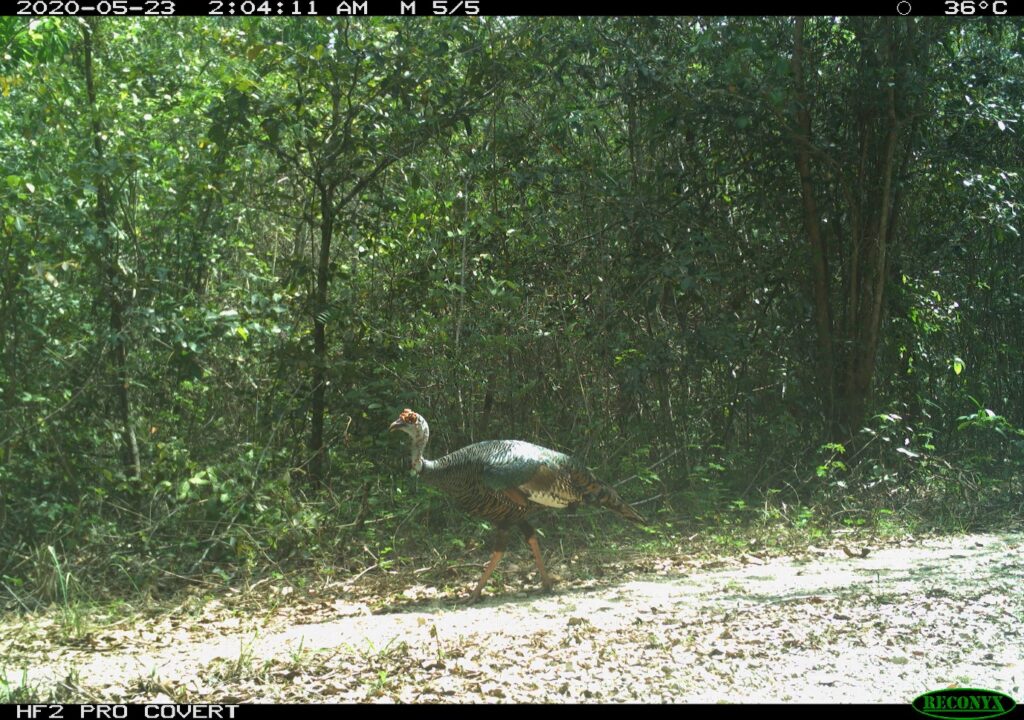
Camera trap image of an Ocellated Turkey in Belize. Image credit: Programme for Belize.
WLT, was originally launched in 1989 as a single project and was the UK part of Programme for Belize. Indeed, the purpose of WLT’s very first fundraising appeal was to purchase land able to create the Rio Bravo Conservation Management Area – so we are delighted to hear that it is continuing to go from strength to strength.
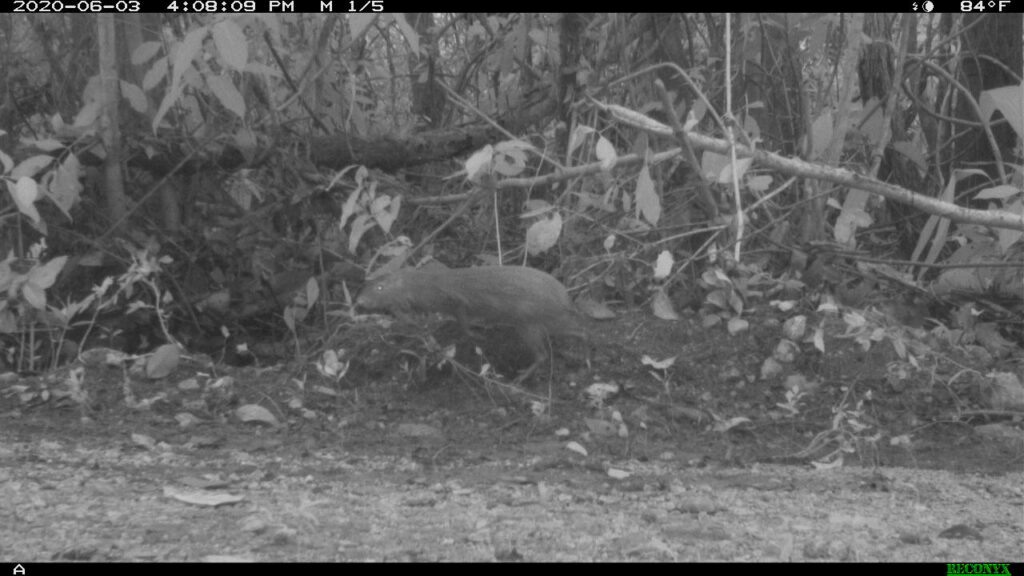
Camera trap image of an Agouti in Belize. Image credit: Programme for Belize.
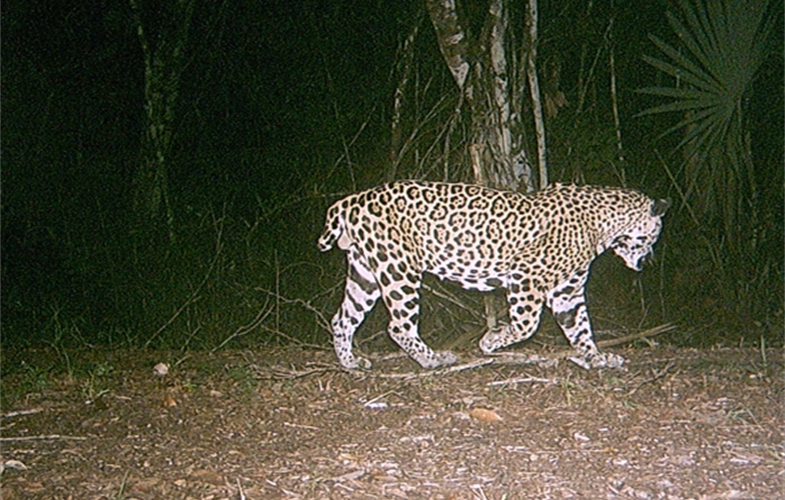
A camera trap image of a Jaguar in Belize, affectionately known as ‘Short Tail’. Image credit: Marcella Kelly.
Interestingly, a Jaguar (Panthera onca) fondly known as ‘Short-tail’, was first seen in Hill Bank in the Rio Bravo reserve in 2009 and has since roamed quite a distance – even crossing the border into Guatemala through currently unprotected forests (as shown in the map below). Short-tail’s epic voyage over the years has highlighted the importance of transboundary conservation, a crucial process for wildlife to roam freely across the political boundaries they cannot see as they travel around, as well as the vital importance of protecting the remaining forests in this region.

A map plotting camera trap recordings of a Jaguar’s movements between 2009 and 2014. Image credit: Marcella Kelly.
Camera traps provide the tools to monitor species in their habitat and collect data for further research. These devices are a vital but expensive piece of conservation equipment. Donations from WLT supporters are critical to boost important conservation work by allowing rangers to monitor wildlife activity in their reserves and beyond – and delivering inspiring updates such as this in the process.
Please help us to support this vital work, and make a commitment to the world’s endangered habitats and their wildlife by becoming
a Friend of World Land Trust today.
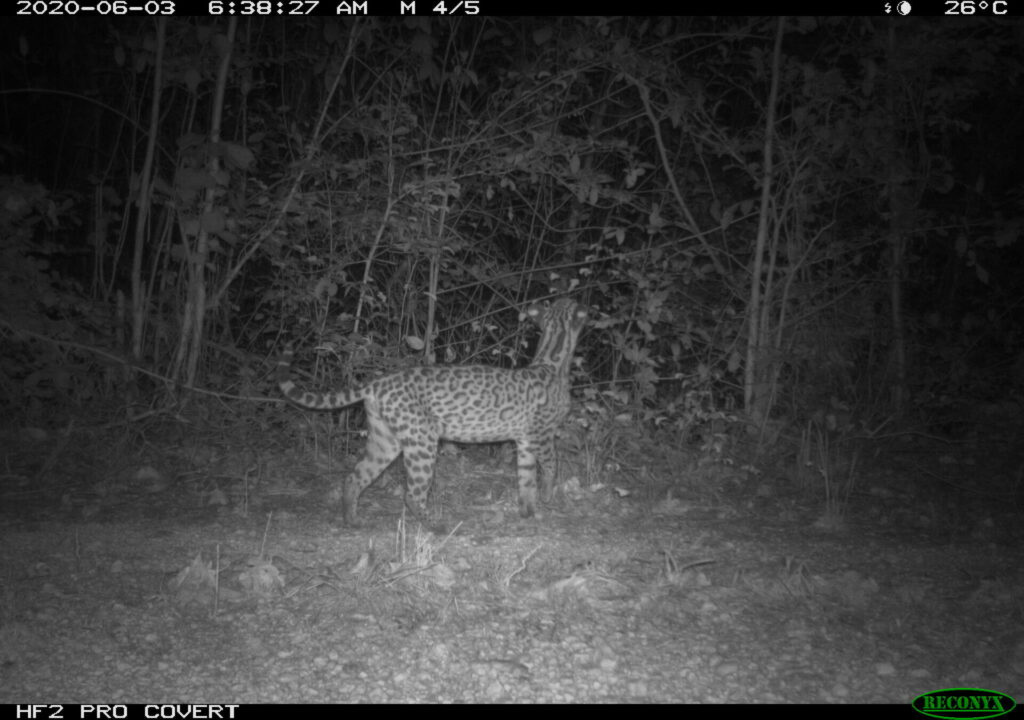
Camera trap image of an Ocelot in Belize. Image credit: Programme for Belize.
